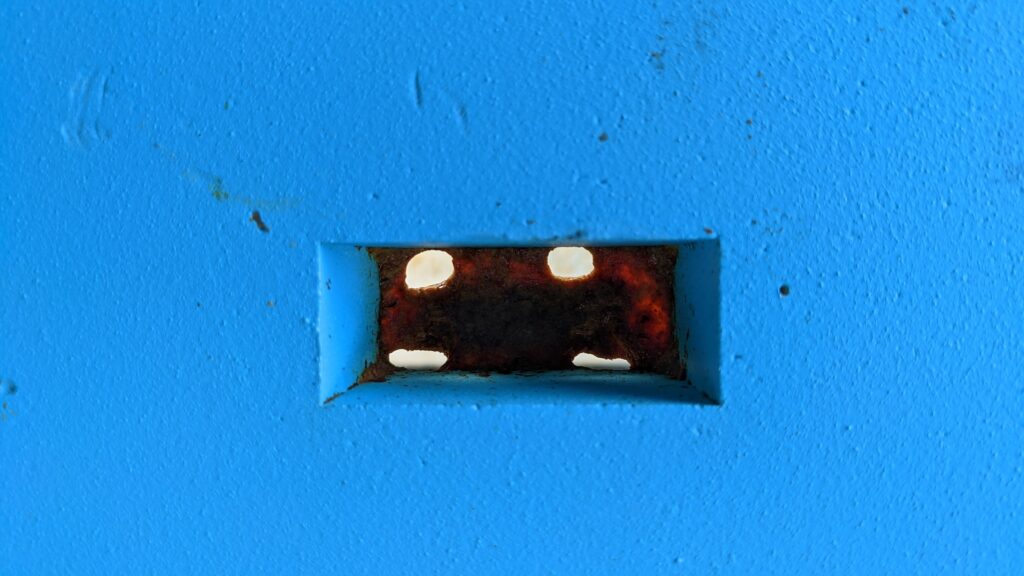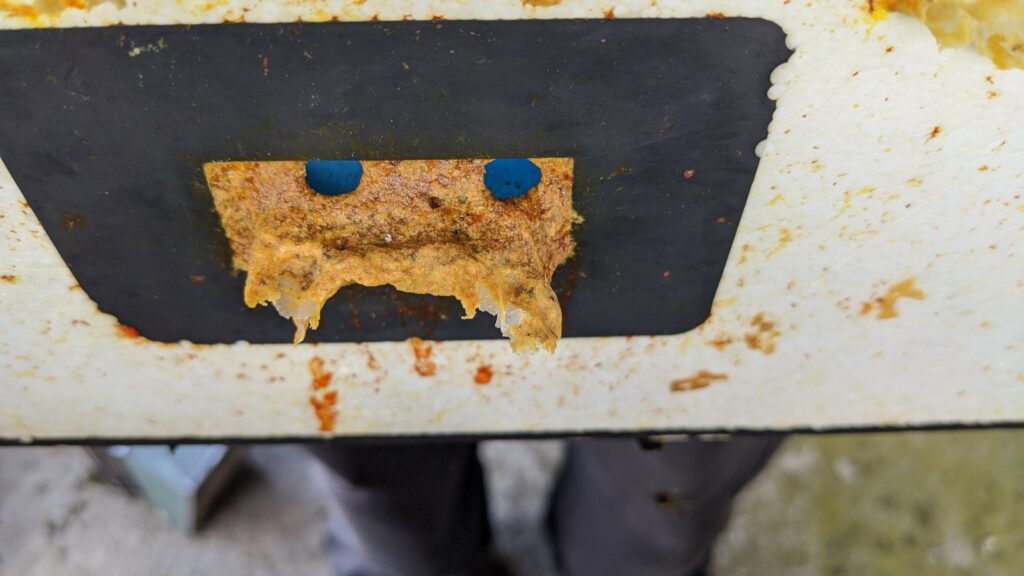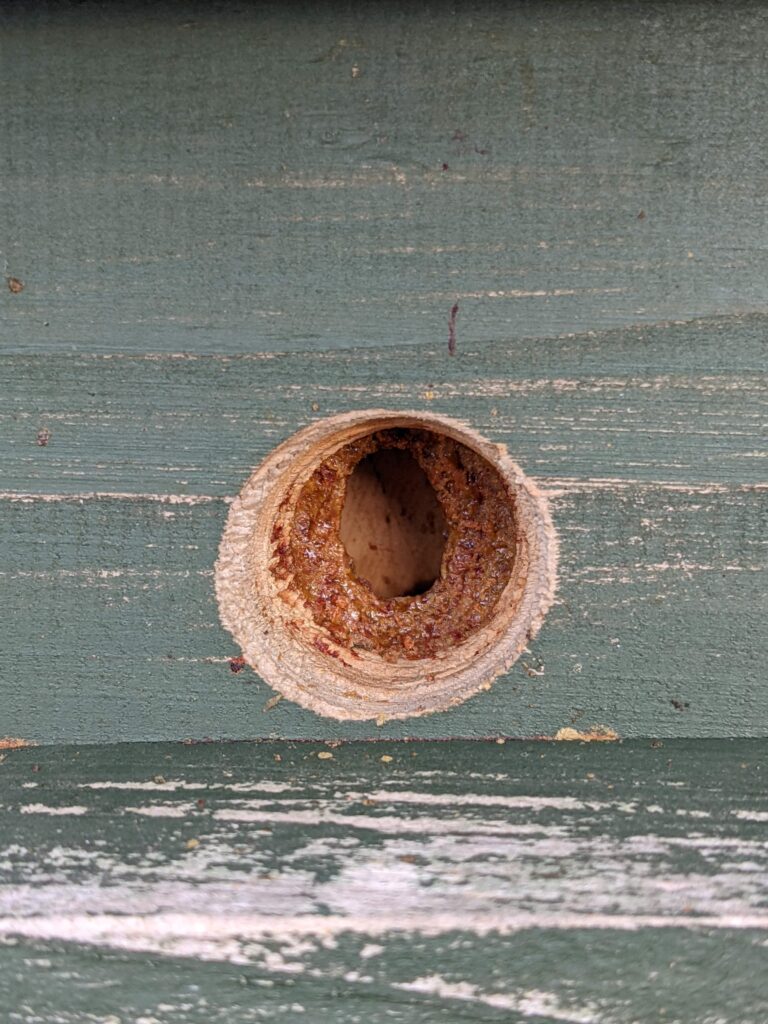What is propolis?
Propolis is plant resin, sometimes mixed with beeswax. Plants when they are stressed or diseased, will produce resin from the bark, leaf buds and sometimes, the flowers (in Europe, mostly conifer and populus trees). The resins that plants produce are highly antimicrobial, meaning that they are antifungal, antibacterial and antiviral: they contain a complex mix of flavonoids and monoterpenes that have a lot of health benefits.
The bees find these plants that are producing these resins and will collect the resins from plants by scraping them off and pack it onto their hind legs. We often see worker bees returning to the hive with their hind legs heavy with resin ready to coat the nest.
Propolis in free-living colonies
Free-living colonies nest in tree cavities (hollowed out trees) and will use the resins to coat the inside wall of the nest with a “propolis envelope”. When the worker returns to the hive with resins, a sister worker bee will help to remove the resin package. Together, they cement the resin onto the walls, cracks and crevasses of the nest. Once the resin is in the hive, it’s called propolis. We don’t think that the bees add any secretions or anything else to change the chemical compositions of the resins, but they will, on occasion, add a little wax.
Bees aren’t daft and won’t waste their time with unnecessary activities: collecting these resins is energetically demanding on the bees and there is no nutrition value, so why do they collect them? What is the benefit to the bees of having a propolis envelope within the nest?
What does the science say?
Scientific studies [1] show that in colonies that have higher levels of propolis, the bees produce less immune responses:
- “Bees do not have to invest as much energy in immune response, probably because the microbe level is lower in colonies with a propolis envelope” (propolis collected and attached to the inside walls of the nest).
- A propolis envelope helps bees reduce disease loads.
- If the colony is sick, particularly with a fungal infection, they will increase the number of resin collector bees.
Managed hives
In modern day beekeeping equipment, the inside wall isn’t where they put the propolis, we think because the inside walls of our modern hives are smooth unlike a hollowed out tree. The bees will put the propolis in the frame rests, any cracks or crevasses, between the hive parts and roof.
Because the bees use propolis to plug gaps (particular draughty gaps) [see photos], we can use food-safe propolis screens to collect propolis from our hives.
What are the benefits of propolis for humans?
- Most of the medical research that has been conducted around propolis are oral studies: gum disease, oral herpes any sort of infection in your mouth. Propolis tinctures have been shown to be very effective.
- Some people use propolis for wounds, although propolis will stain your skin.
- Some take propolis for colds (often taken in tea) or sore throats (as a spray into the mouth).
- There is some research going on in Japan about propolis and reducing tumours [2].
- Propolis and its extracts have numerous applications in treating various diseases due to its antiseptic, anti-inflammatory, antioxidant, antibacterial, antimycotic, antifungal, antiulcer, anticancer, and immunomodulatory properties [3].
- Propolis is a rich source of prebiotics that can improve the intestinal barrier and subsequently can prevent pathogens, toxins, and bacterial dislocation from gut to blood [4].
[1] Simone M, Evans J, Spivak M. 2009. “Resin collection and social immunity”. Evolution 63: 3016-3022
-

- Outside view of a hive box where the bees have created a propolis curtain to reduce the size of the hive entrance.
-

- Inside view of a hive box where the bees have created a propolis curtain to reduce the size of the hive entrance.
-

- Another winterisation by our bees who have used propolis to reduce a north-facing entrance to keep out the draught!


